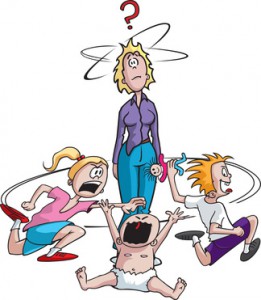Through the Parenting Maze
The art of parenting has gotten lost amidst media hype and controversy. Instead of focusing on effective common sense aspects of parenting, the popular media turns our attention to the sensational and controversial. Tiger moms, free range parents, helicopter parents, attachment parents…a dizzying array of parenting styles presenting the opportunity to debate and argue, which may be great for media ratings but not so good for effective parenting. What is a parent to do? In reality, each of these parenting styles actually has benefits; and each can have a negative impact when taken to an extreme. Take a moment with me to consider the pros and cons of each of these parenting styles.
 Tiger Mom Parenting. Tiger moms balance high expectations with love for their children; and children tend to live up to the expectations of those who exhibit great love for them. Tiger moms teach that persistence and effort leads to success. This helps children develop a “growth oriented mindset” shown to result in persistence, effort, and resilience.
Tiger Mom Parenting. Tiger moms balance high expectations with love for their children; and children tend to live up to the expectations of those who exhibit great love for them. Tiger moms teach that persistence and effort leads to success. This helps children develop a “growth oriented mindset” shown to result in persistence, effort, and resilience.
On the other hand, tiger moms can become intrusive. Their children may experience difficulty establishing an identity apart from their overinvolved and demanding parent. Children may even rebel in an effort to establish their identity apart from parental expectations and demands.
Helicopter parenting. Helicopter parents obviously love their children. They delight in their children and want them to grow into successful adults. To aid in this growth, helicopter parents maintain an awareness of their children and their children’s world, create opportunities for their children, and leverage the environment for their children’s success. This can lead to some wonderful opportunities and successes for their children.
Helicopter parents can also become intrusive. If they do not allow their children to experience failure, they rob them of the opportunity to learn persistence and resilience. By fighting their children’s battles, they rob them of the opportunity to “fight for themselves” and problem solve under pressure. In the long run, children whose parents manage their environment and time too closely will prevent their children from learning to manage their own schedule and assure their own safety.
Attachment parenting. Parents who practice attachment parenting delight in their children. They become active students of their children and their children’s world. Children of attachment parents come to see themselves as valuable, significant, and loved. They learn to talk through and resolve concerns and disagreements they might have with other people.
Taken too an extreme, attachment parenting can result in permissive parenting. Children may not have clearly defined limits reinforced by a consistent “no,” whether spoken or unspoken. Although they learn to solve problems with like-minded parents, they may experience difficulty working through the drama introduced by other children who have not learned these skills.
Free range parenting. Children who experience free range parenting learn independence. They learn creative problem solving as they experience various obstacles in their life. In addition, children of free range parents learn how to manage their safety. They learn what they can and cannot without adult help. Free range parenting also allows children to learn how to manage their own time and schedule effectively.
Free range parenting, when misapplied, can result in neglect. If parents are not aware of their children’s developmental needs and unique vulnerabilities, they can place their children at risk of harm or overwhelming failure.
Overall, we find parenting strengths in each style of parenting. We also see that any parenting style can be taken out of context and misapplied in response to our particular fears or weaknesses as a parent. Rather than getting caught up in the debate and controversy of the latest parenting fad, take the time to learn what makes each parenting style effective (whether you want to call it a balance of love and limits, rules and relationship, or structure and love). Then—whether tiger mom, helicopter parent, attachment parent, or free range parent—practice that balance with as much consistency as you can muster.